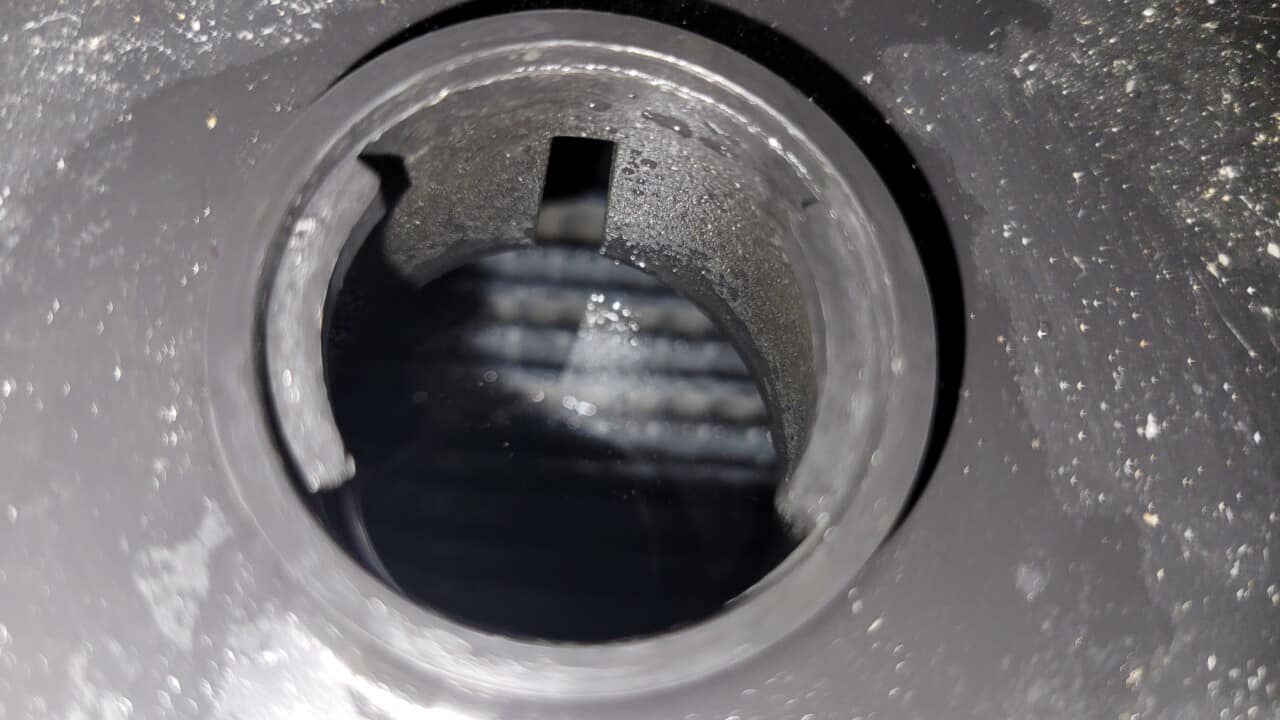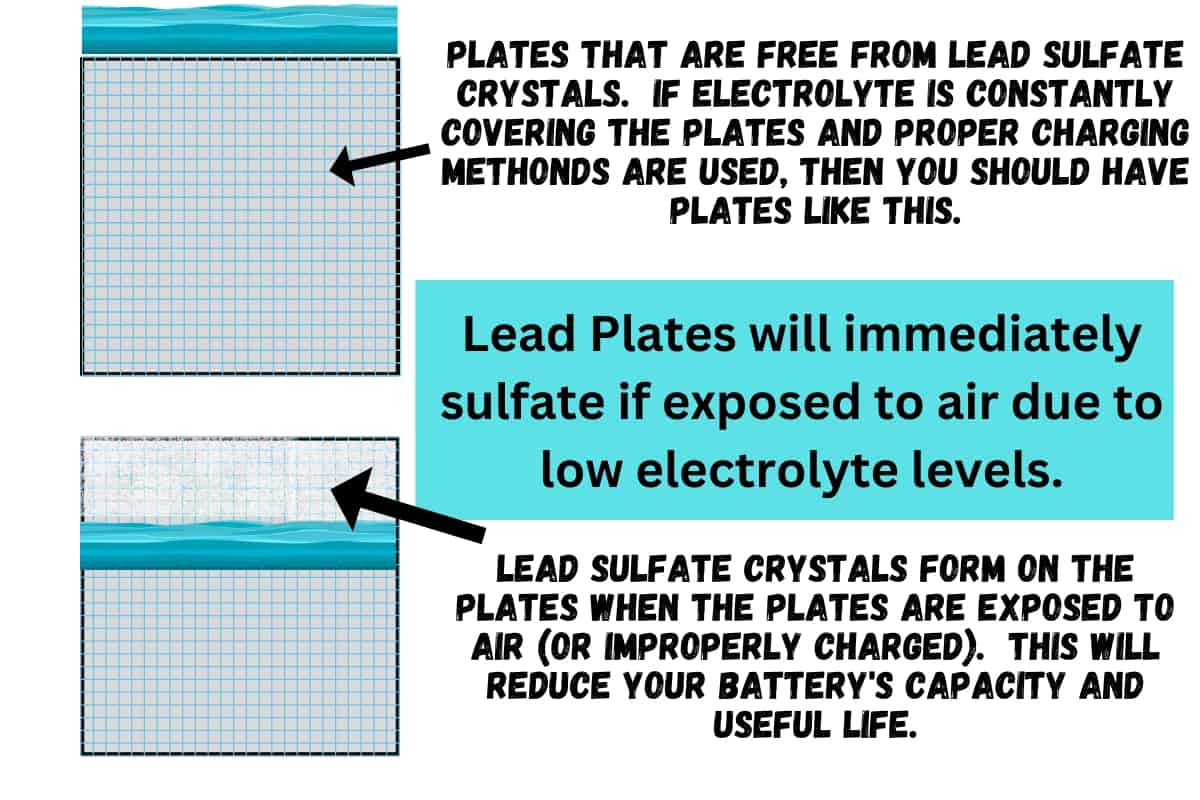Flooded and sealed lead acid batteries are the most common in gas-powered vehicles for starting your car’s engine and running the onboard electronics.
Every once in a while, it’s good practice to check the electrolyte (casually called “water level”) in the battery to make sure the cells aren’t running dry. This procedure can only be performed in flooded batteries, as the sealed ones are, well, sealed.
If you do the procedure correctly and often enough, you should enjoy 6 to 7 years of regular use out of your battery. If you do it incorrectly or not enough, you will certainly see far fewer years of use.
How to Check if a Car Battery Needs Water
As we mentioned before, your battery needs to be a flooded lead acid battery and NOT a sealed lead acid battery. The easiest way to tell is to look for the fill caps on the top of the battery.
Your car battery is almost certainly 12-volts and it will generally have two caps that protect 3 battery cells each (for a total of 6 cells).

Go ahead and use a flat head screwdriver to gently pry up the caps. I recommend always wearing clothes that you don’t mind ruining and safety glasses as well. If you get any of the battery electrolyte on your clothes, it will eat holes right through them. If you get it in your eye, you will instantly regret it.
How Do You Know When Your Car Battery Needs Water
Once your caps removed and the cells are exposed, you’ll likely need a flashlight to peer inside.
Your electrolyte levels should be anywhere from just touching the bottom edge of the fill tube to 1/4″ below it when the car battery is fully charged.

If your levels are significantly lower than 1/4″ below the bottom of the fill tube (but not low enough that the plates are exposed), be sure to charge the battery first to 100% before adding water.
If the plates are exposed, add just enough water to cover them again and then charge your battery to 100% before adding the rest of the water.
How Often Do You Need to Add Water to a Car Battery
It is best practice to perform quarterly inspections (every 3 months) on your car battery to see if the electrolyte levels are low. The rate at which the water will evaporate out of the battery will be dependent upon ambient temperatures, duration of use, charging specs of your alternator, health of each of your individual battery cells, etc.
What Kind of Water Do I Need to Use for My Car Battery?
Whenever possible, it is best to use distilled water in your car battery.
The process of distillation is when water is heated, it evaporates, it condenses on a colder surface, and collects in a separate area from its original source. This means that we’re essentially collecting water vapor in the air and this is the purest form of water.
If there are any impurities, metals, chemicals, or minerals in the water, they will remain in the original source and will not follow the evaporated water from the original source.
If you use any water other than distilled, it will certainly work. However, you’ll be adding in impurities, metals, chemicals, and minerals into the electrolyte that aren’t supposed to be there for the most efficient and effective chemical reactions to take place.
You certainly run the risk of diminishing your car battery’s performance and longevity by using tap water or well water.
Do You Add Water Before or After Charging
Always add the appropriate amount of distilled water to a car battery after it has been 100% charged UNLESS the starting electrolyte levels are low enough to expose the lead plates in the cells. In that case, only add enough water to cover the cells, then charge, and then add the remaining water.
What Happens if the Battery Cells Run Dry or Low?
When your electrolyte levels fall below the level of the plates, lead sulfate will immediately begin to form on them. Lead sulfate is a crystalline substance which will prevent the battery from charging and also from releasing electricity when you go to start your car.

Think of it like dryer lint that builds up on your lint trap. It reduces the efficiency of the dryer and you’ve got to run it much longer to achieve the same result.
When the plates are exposed, your battery will become much hotter during charging and use than it otherwise would have. This also results in more and more electrolyte boiling out and reducing your levels even further.
Eventually you’ll have thermal runaway as atmospheric oxygen begins an exothermic reaction with the exposed plates. Your battery can even catch fire if you’re not careful.
